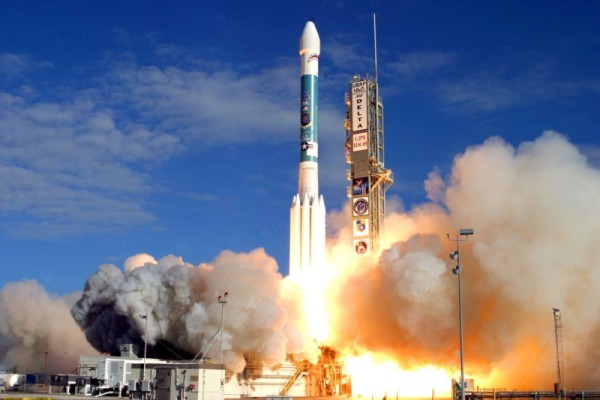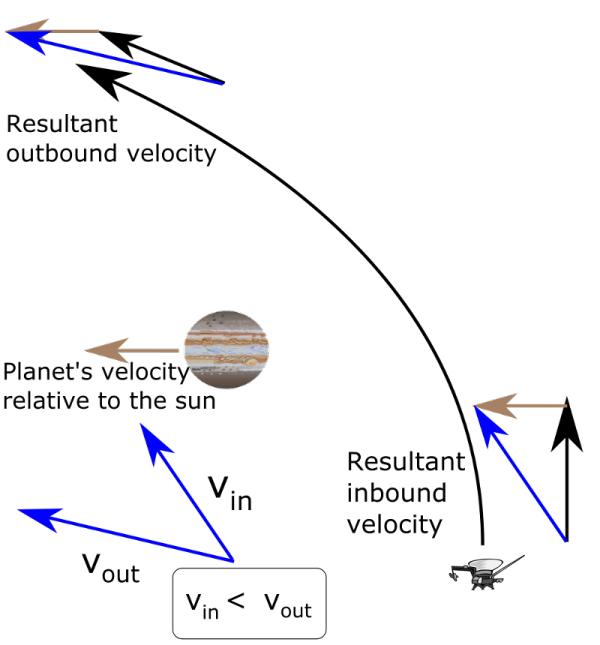“Even in hindsight, I would not change one whit of the Voyager experience. Dreams and sweat carried it off. But most of all, its legacy makes us all Earth travelers among the stars.” -Charley Kohlhase
It's a taxing enough task to launch something off the surface of the Earth, escaping our planet's gravity and finding our way into interplanetary space.
 Image credit: Delta II rocket launch, public domain, via http://www.gps.gov/.
Image credit: Delta II rocket launch, public domain, via http://www.gps.gov/.
But to reach the outer Solar System? To go beyond the gas giants and even escape from our Sun's pull completely? We need a little help to do that. Thankfully, the biggest planet in our Solar System is always ready to lend a helping hand. Or, as it were, an assist of a very particular type: a gravity assist.
Come and find out how we made it to Pluto in record time, and how we could do it again thanks to plain old Newton's gravity!
- Log in to post comments


What a great article, and I really like the nice vector and trajectory diagrams for the gravity assist! You wrote,
"If you gain speed, it conserves energy by leaving the other masses more tightly gravitationally bound, and if you lose speed, it conserves energy by leaving the rest of the masses more loosely gravitationally bound!"
Which is absolutely true, of course. But some of your less physics-intuitive readers may come away with the impression that our spacecraft can "slow down planets."
It's a question of relative magnitudes. Suppose we set up a maximal gravity assist, such that the spacecraft exits parallel to the planet's orbit, so that it gets the biggest "kick" possible from the orbital speed. And let's use Mercury as the planet (why? because it has the lowest mass of nearby planets, and therefore any effect should be maximized).
The MESSENGER spacecraft (which actually went to Mercury :-) ) has a mass of about 500 kg. Mercury's orbital speed is about 50 km/s, and a mass of 3.3E+23 kg. If MESSENGER got the maximum possible gravity assist from Mercury, it would pick up an extra 50 km/s, or a momentum of 25 MN-s.
From conservation of momentum, Mercury would lose exactly that same amount. Given its mass, Mercury would "slow down" by 2.5E+7/3.3E+23 m/s = 7.6E-15 m/s, or 7.6 femtometers per second.
A femtometer is roughly the diameter of a small atomic nucleus (hydrogen or helium). Taking a second or so to travel across an atomic nucleus is slow, slow, SLOW. I image that the drag on Mercury induced by travelling through interplanetary space is larger than that :-)
So .... what? Well, the bottom line here (for your readers) is that we would need to fly a lot (at least 10,000,000,000,000,000: a LOT!) of spacecraft through gravity assists before we could make visible changes to planetary orbits.
You can't deny the truth. Alien spaceships are the real reason all those exoplanets have tiny orbits!
There are a couple factual errors in this piece that should probably be corrected.
The first error is that New Horizons never was the fastest spacecraft ever in space. That honor goes to Helios I and II which hit a peak speeds over 70 km/s (~150,000 miles per hour). New Horizons has the record for the fastest launch velocity at 16.26 km/s. That plus the Earth's 30 km/s orbital velocity gave the Hew Horizons spacecraft a heliocentric velocity of roughly 45 km/s, well short of the Helios I and II speeds.
The second error in the article is the Jupiter gravitational assist did nothing to help Hew Horizons reach its peak speed. New Horizon's peak speed was the 45 km/s velocity it had the moment the rockets stopped firing. The pull of the sun's gravity had slowed New Horizons all the way down to 19 km/s before it got to Jupiter's gravity well. The gravity assist at Jupiter only gave the spacecraft an additional 4 km/s.
Here is a chart of New Horizon's heliocentric speed:
http://blogs.scientificamerican.com/life-unbounded/files/2013/02/ssr-mi…
As you can clearly see, New Horizons was only going half as fast at the conclusion of the Jupiter gravity assist as it was immediately after the rockets cut off.